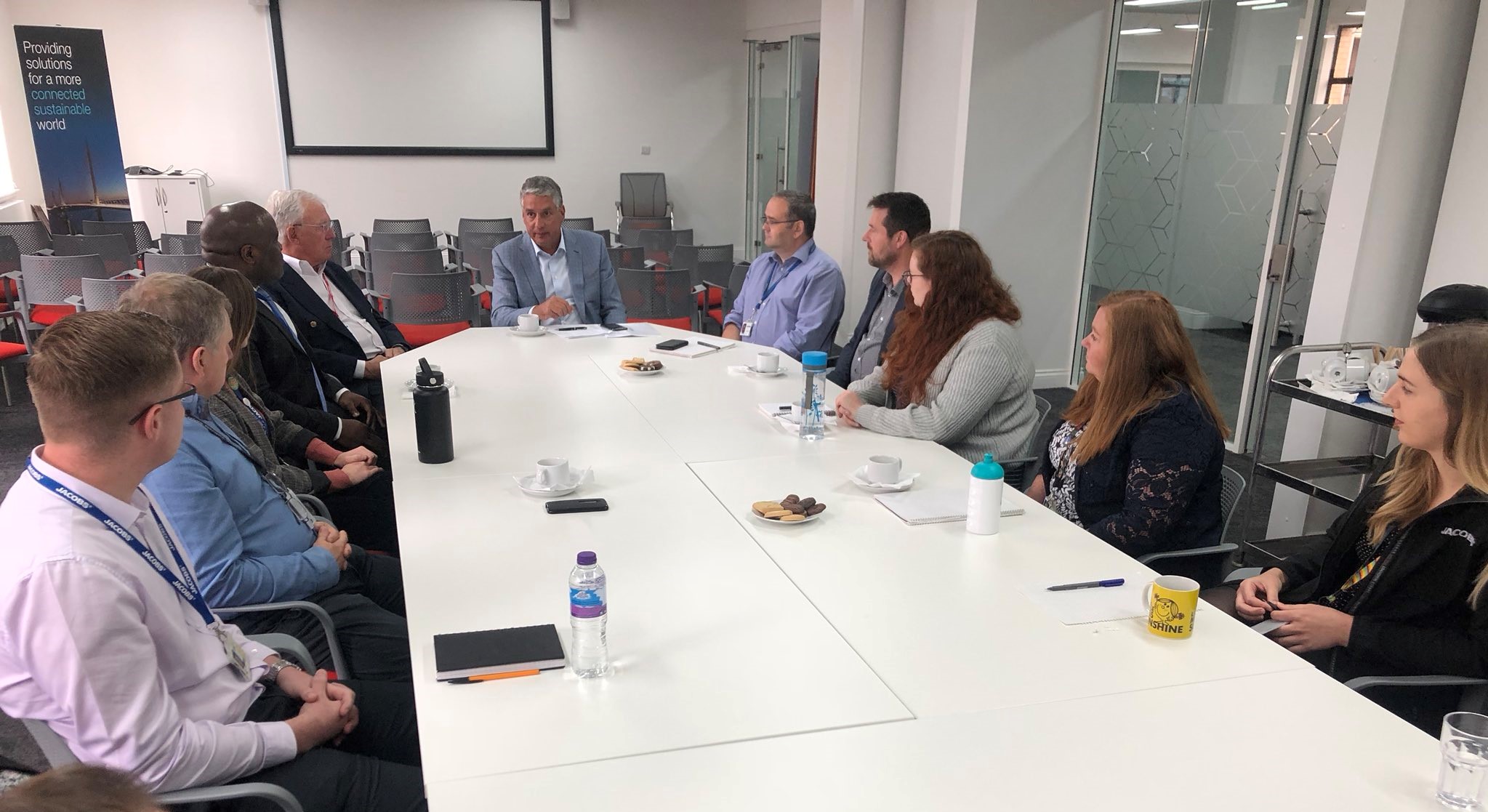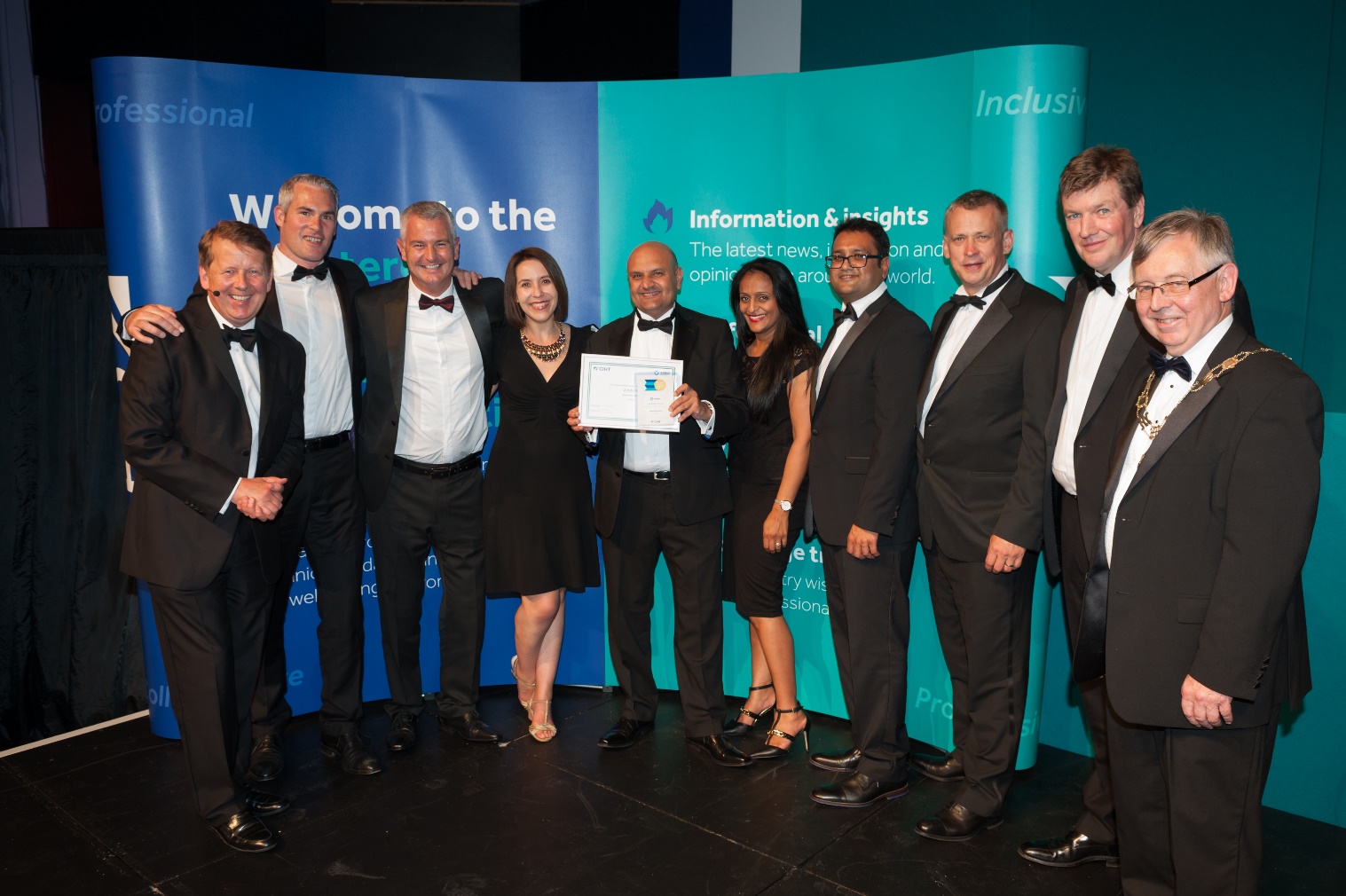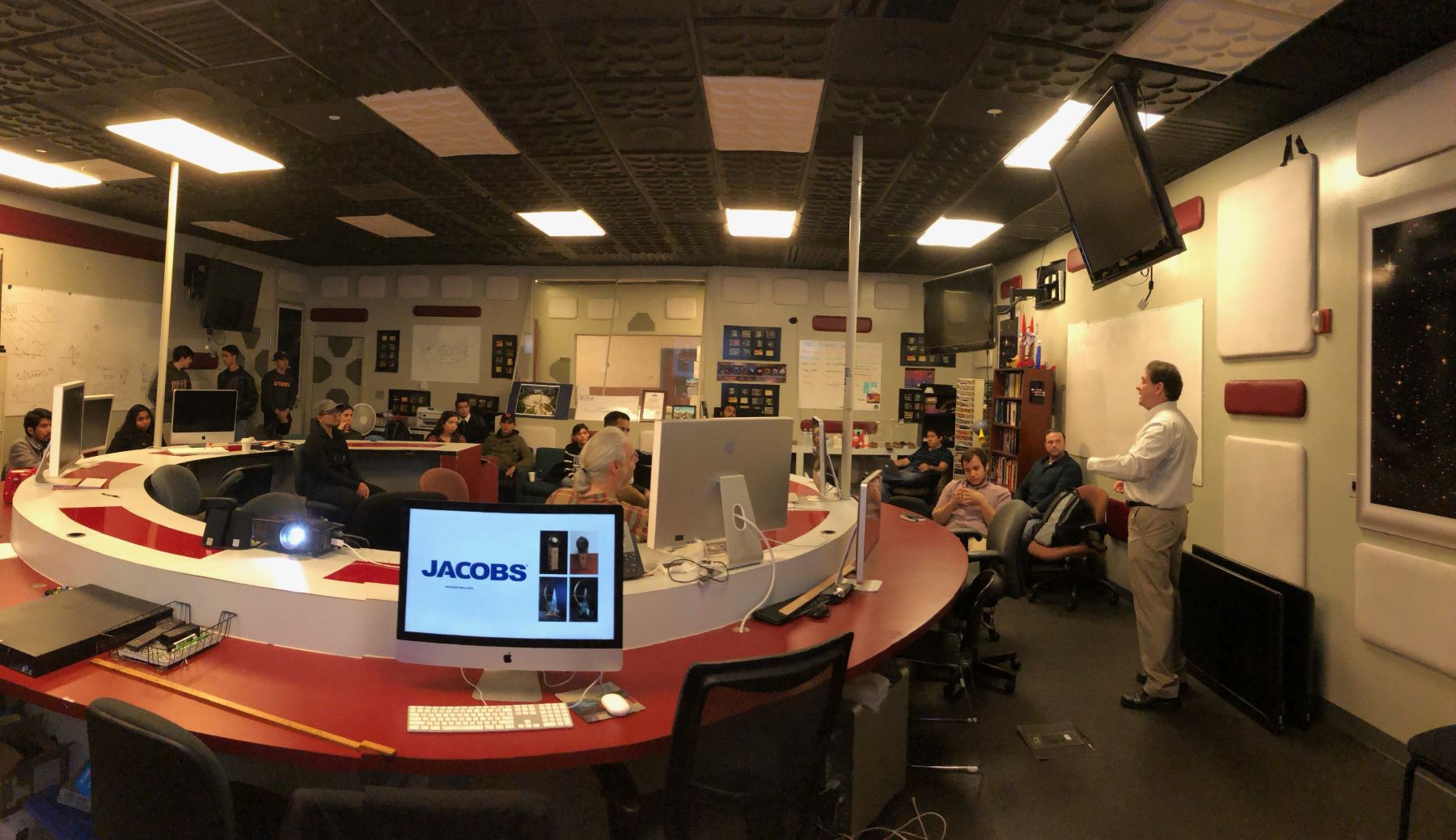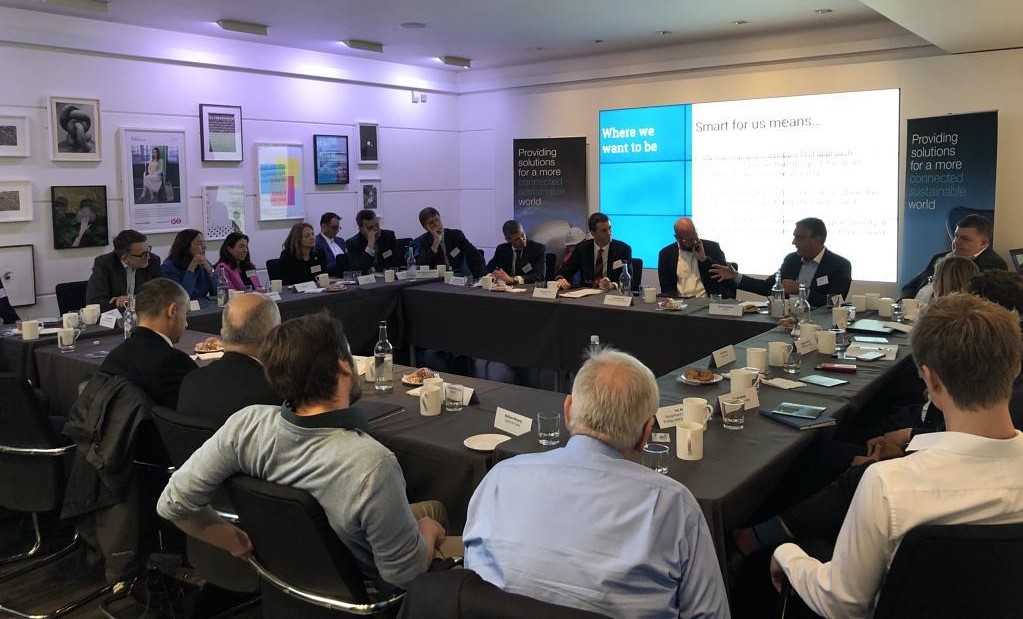How to Promote Diversity When Your CEOs Are Not Ready for Change?
Evolving from a one-person engineering firm to a global provider of professional technical services with more than 60,000 employees worldwide. Jacob Engineering Group was founded in 1947 as a small one-man firm of Dr. Joseph Jacobs. Fast forward 74 years in the industry, the firm has become the largest and most diverse provider of professional design, engineering, program management, and project management service by concentrating on a fundamental business strategy of building long-term client relationships.
However, around 2010s the company seems to hit a wall financially. As the giant made its effort to reignite growth, it prompts to make serial acquisitions without proper integration between firms culturally and strategically. “A lot of the culture had not adjusted as it became a world-class Fortune 500 company,” says Jacobs’s CEO – Steve Demetriou. “Some of the modern business practices had just sort of been implemented as some of the homegrown leadership had not adjusted.”
And that is when Demetriou decided the company need to flip the current culture, to reborn as an up-to-date firm and match the spiritual growth with its physical growth. How did he realize it’s the ill culture that kills his firm’s status quo, what is the right culture for global organizations, and especially the conversation on diversity and inclusion? How to apply that exactly.
A Shift That Is Necessary For Growth
Back when Jacobs was so full of its buyouts and get choked on the overdrive number and lacked in quality. Its presence is everywhere around the globe but it was fragmented, all branches were not inherited the same mentality to strive for any purpose. In an interview with NYSE, Steve Demetriou recalls the phenomenal transformation of his firm’s culture.
Where Was It before and Where Is It Now?
Before it was all about head-downs, the mentality of ‘if you do good and the future will take care of itself, which is, to Demetriou, seriously lacks inspiration and accountability.

“We have several hundred offices around the world all fending for themselves just trying to maximize billable hours and we wanted to transform that to be something much more purposeful client-oriented, solutions rather than billable hours,” Demetriou claims. What he wants is to engage every employee to where they feel inspired, feel like they belong, and are connected to the strategy their leadership is holding onto.
The CEO recalls, back in 2015, when the companies make their first move toward changes. It did an organizational health assessment with the third-party consultant. At that point, the firm had received tremendous feedback on what was going wrong and where were the disconnects that were leading to the environment.
How it executes that? After the survey result, Demetriou says he had the company reorganized from the regional structure where every office was in charge to a global line of business structure and replaced it with only four lines of businesses, which are overseen by four global leaders. And started cascading that accountability of the culture change to that structure.
The outcome is that it has become much more globally focused, collaborative across these big businesses rather than the old model where everyone was left fending only for themselves.
Before Demetriou’s arrival, the entirety of the company’s top leadership was living and working in Pasadena, and all of them were white American men.
The CEO recalls what was most noticeable was when he first walked in that a hundred percent of the leadership were all men sitting in the California headquarter which was not only a lack of gender diversity but also geographic diversity. It was an ivory tower-type mindset that everything is centered in California and so he and the team came up with a series of other initiatives to change that culture.
Started off by relocated the headquarters then diversifying the leadership, as of today, 60% of its leadership team are women and 75% of the executive teams are diverse, Demetriou says.
Biggest Lesson Walking Out of This Transformation

As a serial CEO himself, Demetriou remembers how he has started to play the role since 2001 with series of companies which were all in the area of manufacturing and companies like those. So, it’s has been 20 years, since his first day leading, what is the difference in the experience of being a CEO today than it was 10 years ago? And the biggest lesson he earned along with the transformation at Jacobs.
In reality, they say people are important but only these big mega manufacturing facilities – they think of every day. How to get a better one? How to build a perfect system. But never thought it that way when it comes to people.
“What I learned coming to Jacobs a services industry is that – it’s all about people, regardless of industry. 55,000 people are 100% of my asset,” Demetriou shares.
“With those doctrines, I had adjusted quite a lot in my leading style. It has to be 100% people-focused – it’s all about your talent across the world and unless they are inspired and they understand how they fit into the purpose of your company.”
Unless they buy into that you can’t have a successful culture.
Meaning that it can’t just about what leaders want, it has to be holistically what is important to the masses – so you can drive the company in that direction and that is a big change for leaders. For those that need to adjust from the old-school business mindset to a much more dynamic innovative diverse and recognizing if you’re going to be innovative, sustainable, or all the things everybody wants to be, you have to have age diversity and bet on different generations that, maybe, you were slow to react in the past.
That is his learning!
Demetriou also talks about cases where leaders are not ready for changes or not intentional enough about it.
Alert: Leaders or Blockers?

Somewhere and sometime across your organization, there will be this leader who is blocking the culture from breaking through. At Jacobs, the CEO calls them the clay-layers. “So, it’s your duty to break those clay-layers and continue to make changes by helping leaders change or else – replacing them,” insists the CEO.
Clay-layers or blockers. Sometimes you don’t know where it is, but it exists based on employee feedback. When CEOs or leaders lose on the diversity side of things by saying that they can’t find enough qualified candidates or “it’s hard to find women or minorities for our board, for our leadership team”.
How to respond to that?
“You’re not making a priority, you don’t really believe in it, you are coping out and taking the easy route and delaying what you need to do create a great company,” he says. This is not an issue talking to other CEOs, this is what he is doing as coaching, the mentoring, and counseling that he is doing even with leaders in the company.
It could be showcased on the recruitment site, at the company every time there is an opening, the best candidates would be picked out and being interviews not by one man but by a diverse team. That’s how diversity works!
In five-year time, the concept of being a public CEO is going to change and the need to empower is going to be massively different.
The board and CEOs need to be made up of much more age diversity. You are going to see some of these major corporations around the world have 20s 30s years-old board members that come from a whole different industry to bring the culture into these companies.
“I think leadership teams are going to need to have similar makeup and you’re going to need the balance of experience, know-how, and domain knowledge with these sharp innovative,” the CEO insists. Naturally, the change-makers come together, and that makes the significantly new demographics of leadership and board.
The Talent War: How to Wins Their Hearts and Minds?
New cultures are meant to nurture the upcoming workforce. What are the things the firm’s leadership team has put in place that helped with recruitment particularly aiming at the most intelligent workers?

Another thing he learned from this business is that retention is not easy. “It takes all the great tech company and service company; I was surprised to find that 12 – 15% voluntary attrition as normal.”
So, set out to imitate what other companies are doing is not acceptable, the firm wants to drive down the voluntary attrition rate. It plans to focus on diversity and heavily invest in the employees’ mental health.
You have to commit to your employees, let them know that they matter and you care about what matters to them too. Like how the company recognizes that mental health is a stigma that needs to be turned into like any other health issue. Those should be the little things that help driving down your attrition. And you would win the talent war, not just by drawing and recruiting great people, but by holding on to your great people.
One of the distinct traits of the Engineering & Construction industry is how it is driven by people who are trained in engineering, science, and analytics – the backbone of the industry’s success. But, in many cases, these individuals are underprepared for how to lead people and build a culture that engages and inspires.
So many companies fail because they don’t truly know their people, how to engage them, how to communicate, and ultimately, how to win hearts and minds. As a starting point, it’s helpful to have a mechanism to assess and measure culture. You need to have a baseline and benchmarks to diagnose strengths and weaknesses.
In the firm’s case, the CEO and his team discovered a number of broken internal management practices that stood in the way of the aspirations of an accountable culture. The firm’s cultural journey has involved identifying and addressing the elements that threaten a culture of accountability.
“Proven research shows that the companies that are the most diverse have the best quality, the best retention, the best innovation, best shareholder value,” he says. “So, it’s not only the right thing to do. It’s good business.”
Gender Diversity Won’t Work If You Just Put More Women on Board

Demetriou says he doesn’t understand why more companies don’t make diversity and inclusion a top priority.
At Jacobs that is the top-line and bottom-line growth, the company has done a lot of research on best-in-class companies and found that there is a huge link to the most diverse leadership team, the most diverse companies translated into the best shareholder returns over a five to ten-years period. And to the CEO, it’s a waste that companies failed to embrace that mentality.
Tom Price, Jacob’s Senior Vice President of Global Growth Strategy & Solutions, also shares thoughts on the subject.
According to him, your mindset and approach have to be comprehensive. You cannot hire more women and call it a success. Diversity strategy means uprooting the bias in choosing the best people and believe everybody can be that best candidate. It’s not acceptable if most female professionals are consigned to lower-level positions, you can only claim success when there is authentic equality across all levels of your organizations.
And there are steps to make it happens, but the genesis of it is your organization needs to rewire your processes, people, and system to effect and sustain the change. Through not only equal opportunities in training and development but also sponsorship efforts.
You need to understand that gender issues are not just about women, it’s about all of us. Organizations and leaders have to look at the actual business benefits of a more inclusive and diverse workforce. That is why your organization is doing it, not for any specific group but the company as a whole!
“It’s not enough just to have diverse people. You have to activate that diversity, so everybody can bring it to the table,” says Price.
The Three Traits That Winning E&C Companies Have

Along with the innovation in products, companies hardly succeed unless their workforce is also as fast on catching up with innovative culture. In a recent interview, CEO Demetrious describes with McKinsey, his vision amongst the trends, what must Engineering & Construction (E&C) companies do to be successful?
The E&C industry holds the overlay of technology, therefore, with the rise of digital, artificial intelligence, and automation technologies, it’s obvious you have to race to upgrade your skills base and increase productivity.
Which has caused a major war on talent since you are all competing for a new breed of skilled workers. So, to be successful, according to Demetriou there are three keys companies have to hold.
First, companies need to shift from a “billable hours” mindset to one focused on being a solutions provider, effectively becoming thought partners for clients rather than focusing on pushing services and submitting bids.
Second, the companies that leverage global capabilities and delivery platforms are going to be winners because most of the big opportunities out there are in translating proven experiences across the globe to deliver projects locally.
Third, portfolio management is going to be key because companies can’t do everything. You have to articulate what you are going to focus on and what you’re not—and then be relentless on staying true to that strategy. Jacobs launched its portfolio strategy in 2016, communicated it externally, and for has worked hard to deliver against it.
And the final touch is culture and talent. Corporates have been talking about this as an industry for years. But it starts by taking culture as seriously as you take your financial performance priorities.
The Ugly of Chasing Volume
Another aspect that they discussed is the traditional performance challenges of big write-offs and low total return to shareholders. What are the differentiators that successful companies are driving and others lack?
Back in the day, it was a common-sense held amongst many industries, not only E&C, that it was acceptable to deliver revenue growth without safeguarding profitability, and urging volume without the necessary delivery capability and discipline was okay. Which why it fails eventually.
“I believe successful companies will be the ones who look at the bigger picture and change that mindset about what matters,” says Demetriou. At Jacobs, that means focusing on higher returns, stronger cash flows, and better margins, and reinvesting back in the firm’s business.
The second ugly of chasing volume are write-offs. This industry is known for its long history of taking write-offs, which obviously bite off the collective bottom line. And in the case of Jacobs, it has painfully been there to tell the story.
In 2015, the companies reach a record-high write-off. When everything was about to fall apart, the company decided to take the difficult steps required to correct the course. It shut down offices, restructured the cost base. And finally set out new processes and IT systems to improve enterprise resource planning across its supply chain. And with the healthy growth, as of now, the company announced a 6.5% growth rate compared to 2019 – as $13.6B in 2020 revenue.
The Bottom Line
More on the company, Demetriou says the next challenge the company has taken on and is using the full capacity to overcome is the demanding problems behind the global transition to a net-zero society, which comes from the day-to-day solutions and projects it provides clients.
What has happened with its successful transformation was phenomenal to bring hope and inspiration for others to also transform their organization. The firm has uncovered the mystery of how embracing the strength of humanity’s diversity could help achieve financial success.









